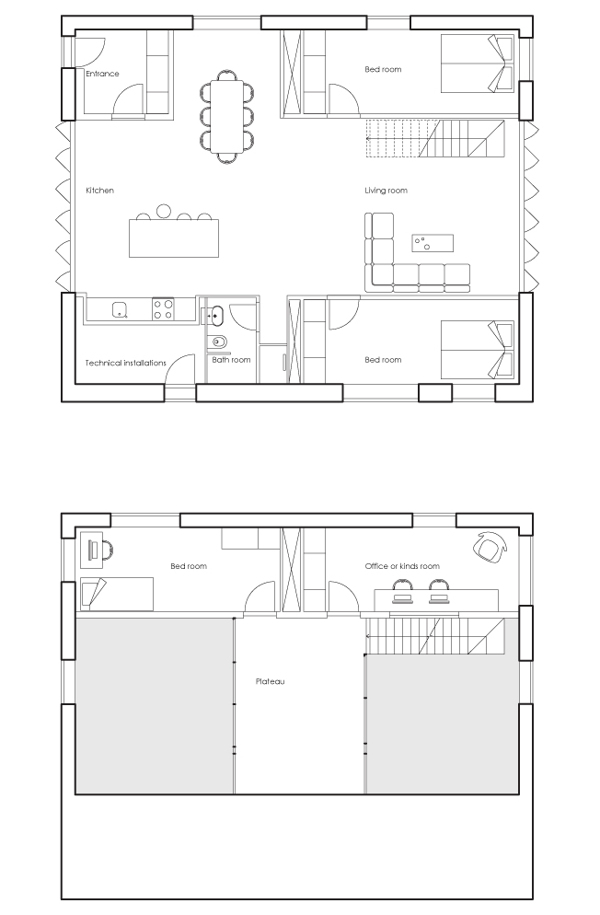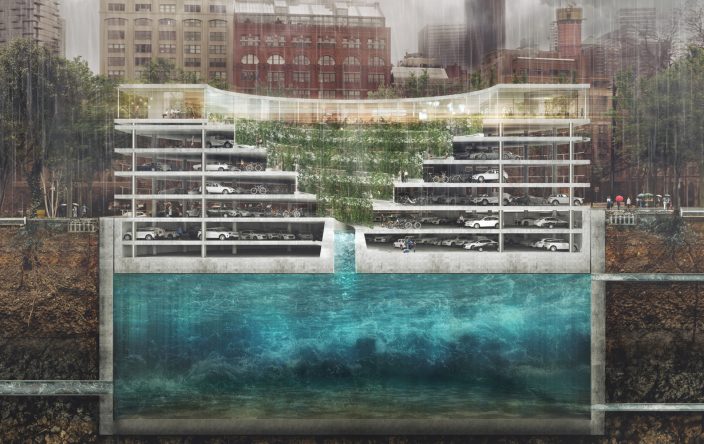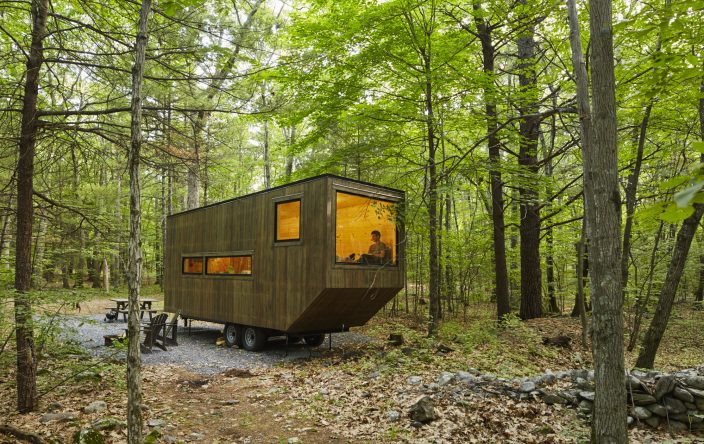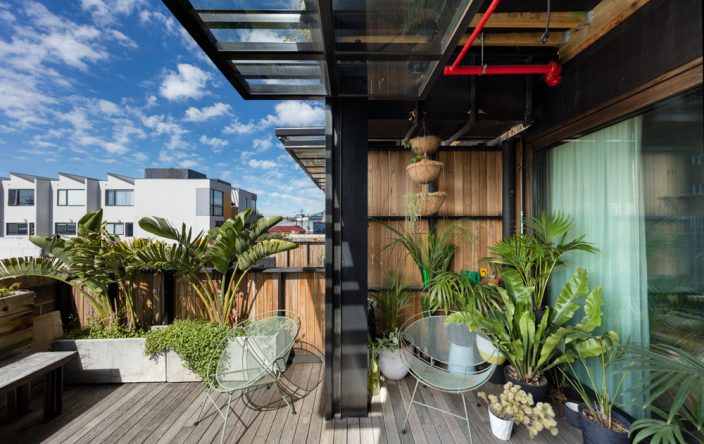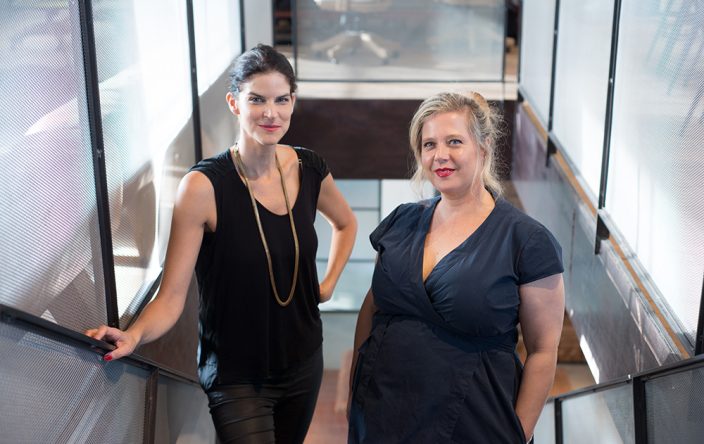
Sustainable Prefab House Made of Shipping Containers
The WFH House concept is a patented modular building system, based on a design principle, using 40 feet high standard modules as structural system. The structure can be configured to meet many different purposes like multi storey, townhouses, cluster houses or individual villas. The prefab house can be exported to any place in the world which makes it an interesting sustainable product.
Again another project re-using old shipping containers. What I like about the project is that that create an interesting house type with an open space living area in the centre of the building. I really like the shape of the house which was designed by Arcgency, a danish architectural practice.
The most interesting part for me is that the founders created an architectural product, which they could market all over the world. I could not figure out how much the prototype house would cost but I will update the article as soon as I find out. I am curious if the start-up worldFLEXhome will really make it to mass production . But hopefully they will work on doing that. I like the idea and the concept they created. Read everything about the design below.
Design concept of the WFH House
(Describtion by worldFLEXhome)
The design is based on Nordic values. Not only according to architecture, but also design objects. These values are defined as:
- Flexibility.
- Build for people, human values. – Good daylight conditions, different types of light.
- Reliable (long term) solutions. – Healthy materials, recyclable materials, design for disassembly strategies.
- Materials that age gracefully.
- Access to nature, greenery.
- Minimalistic look.
- Playfulness.
- Sustainable global housing
Facts
- Size: 180 sqm
- Location of Prototype: Wuxi, China
- Architects: Arcgency
- Client: worldFLEXhome
- Photos: Jens Markus Lindhe

The WFH concept is a modular concept, based on a design principle, using 40 feet high cube standard modules as structural system. The structure can be adapted to local challenges such as climatic or earthquake issues. Online customization-tools give clients the possibility to decide their own version of the house concerning layout, size, facade, interior etc. The configuration happens within a predefined framework that will ensure high architectural value and quality of materials. Building-components are prefabricated and on site construction can be limited.

FLEX space
The FLEX space is the heart of the house. It contains the living room, kitchen and can be used for multiple purposes. Parts of the room are double height, creating perfect lighting conditions. The rest of the space is one story height, defined by the landing that creates access to the spaces on the second floor. In each end of the FLEX space there is access to the surroundings and daylight. The boundary between inside and outside disappears, when the doors open. This is a fundamental part of the design; to be able to open let nature in. It is a consequence of having varying requirements for inside temperature and definitions of what domestic functions takes place inside and outside.

Geometry
The geometry of the FLEX space is defined by the two rows of modules, and can easily be modified to specific wishes regarding size. The FLEX space has a number of possible solutions for subdivisions. Both on one plan or two plans. It can also be one big space, creating a lot of light and openness. The kitchen elements are built into the wall (into the technical module). It creates more floor space and also makes connection to water and plumbing easy. The kitchen can also be extended with at freestanding element, defining the work area of the kitchen. From the FLEX space there is access to all spaces. This eliminates square meters used for logistics. It is possible to make larger openings from the FLEX space into the rooms, again creating flexible solutions within the same system.

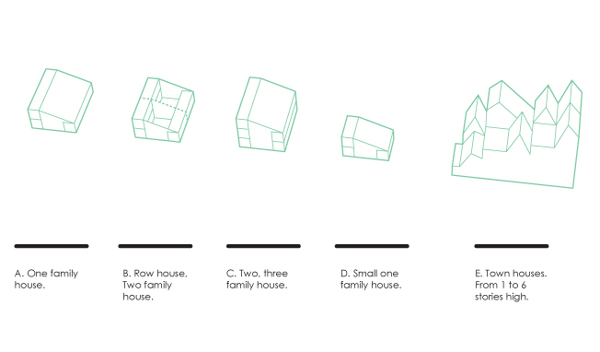

The work area of the kitchen
From the FLEX space there is access to all spaces. This eliminates square meters used for logistics. It is possible to make larger openings from the FLEX space into the rooms, again creating flexible solutions within the same system.

Bedrooms
The size of the bedrooms is defined by the half of a module (15m2). There are four bedrooms, and they can be used for multiple purposes: A parent’s bedroom, kid’s bedroom, workspace etc. Three of the rooms have windows on two facades, creating a mixed light. It is possible to remove the wall, or part of it, facing the FLEX space. This adds flexibility to the layout and shows the structural systems ability to adapt do different needs.

Landing
The landing creates access to the second floor, but can also be used as a space for play, relaxation or work. It gives the inhabitant the possibility to draw back, but still enjoy the company of people in the house. You are in the FLEX space, but because you are on the first floor you are drawn back from the action. It is an ideal place for a quiet retreat and still being able to observe what is going on in the house.






Join our Newsletter
Get our best content on Architecture, Creative Strategies and Business. Delivered each week for free.

JOIN THE
ARCHIPRENEUR ACADEMY
- 9 Stage Studio Growth Roadmap
- Library of In-Depth Courses
- Checklists and Workbooks
- Quick Tips and Tutorials
- A Supportive Online Community


